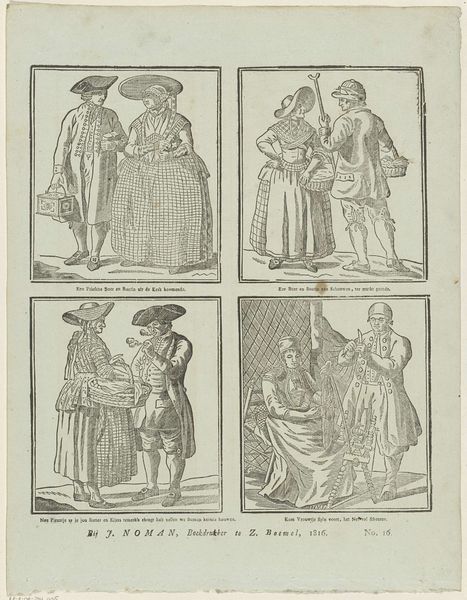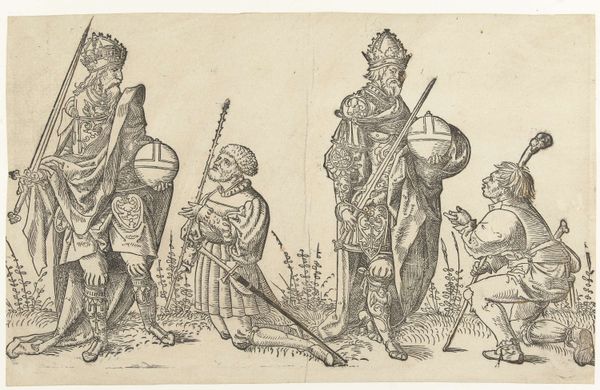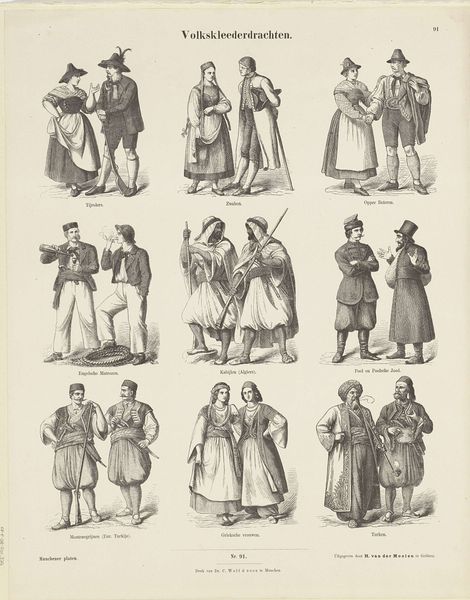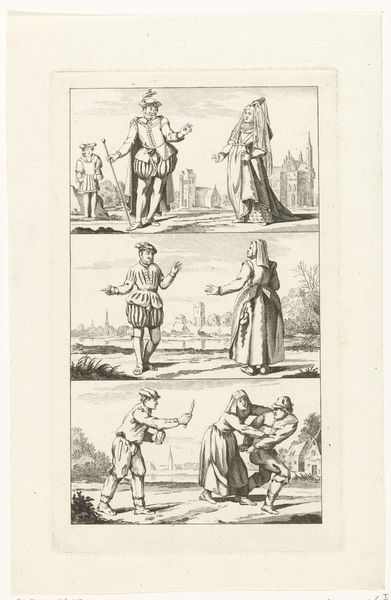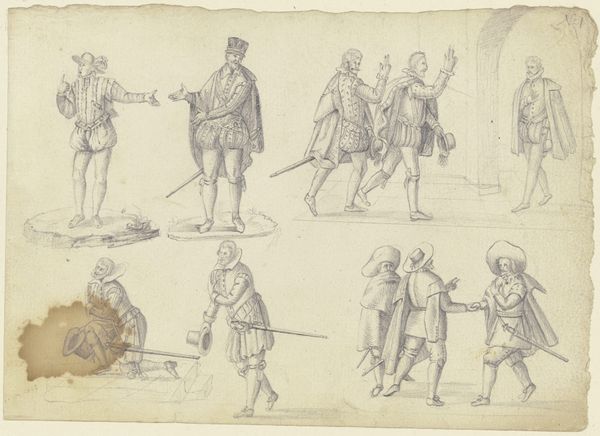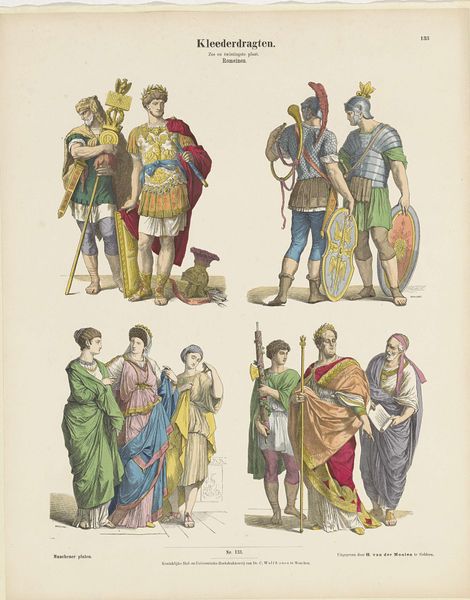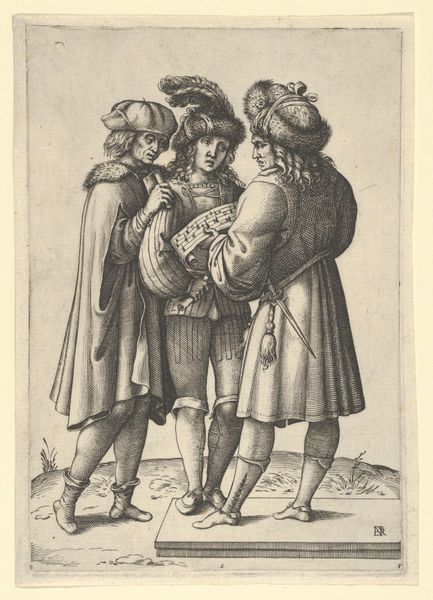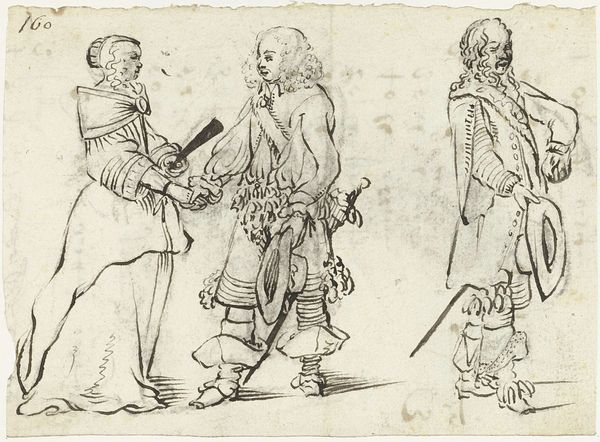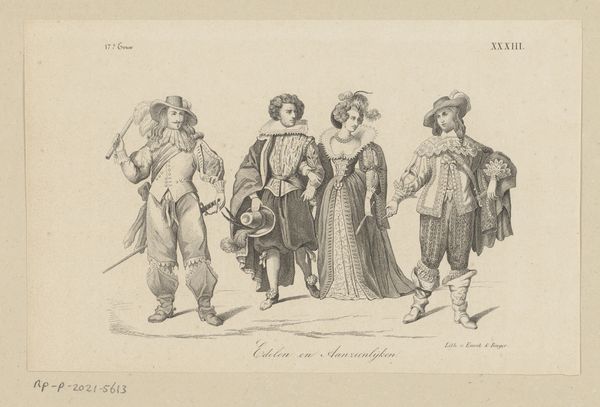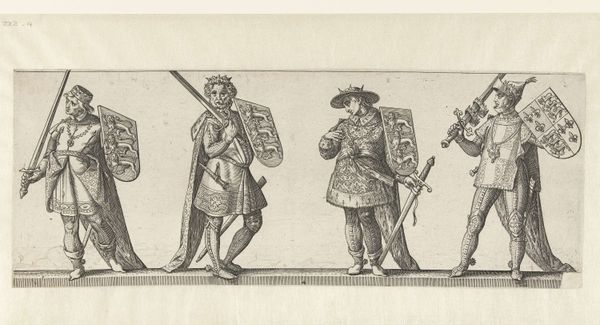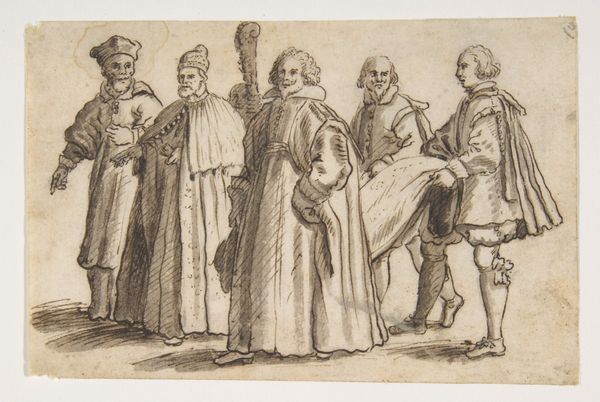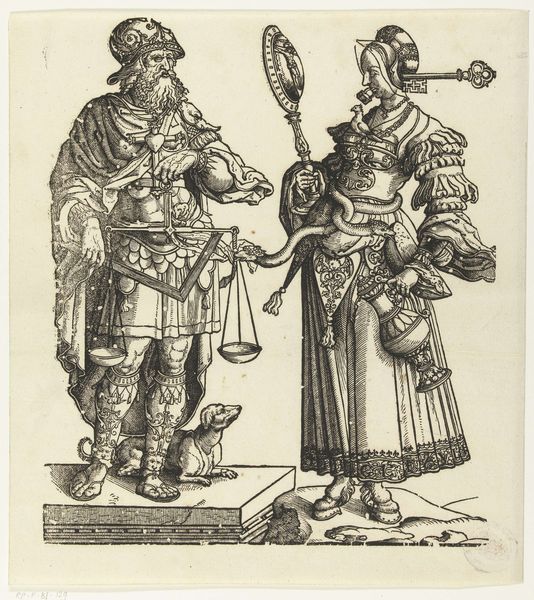
drawing, print, engraving
#
drawing
#
light pencil work
#
medieval
# print
#
figuration
#
history-painting
#
engraving
Dimensions: height 442 mm, width 353 mm
Copyright: Rijks Museum: Open Domain
Ernst Fröhlich made this print, titled "Kleederdragten / Het begin der zestiende eeuw," sometime in the 19th century. This detailed print offers a glimpse into the attire of the early 16th century, likely in the Netherlands, where Fröhlich was active. What we see here aren't just clothes, but rather signifiers of social standing and occupation. The variations in fabric, cut, and accessories speak volumes about the rigid hierarchies of the time. Consider the contrast between the modestly dressed commoners and the elaborately adorned figures who are clearly members of the upper class. Even the weaponry and hunting dogs serve as indicators of privilege. The print’s very existence reflects the 19th-century's fascination with historical accuracy and national identity, a theme that played out in art academies and museums across Europe. To understand this image better, we can dig into costume history, social history, and the history of printmaking to understand its meaning more fully. This kind of research reminds us that art always exists in a specific social and institutional context.
Comments
No comments
Be the first to comment and join the conversation on the ultimate creative platform.

